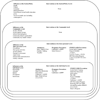Sexual health behavior interventions for U.S. Latino adolescents: a systematic review of the literature
- PMID: 22206687
- PMCID: PMC3437918
- DOI: 10.1016/j.jpag.2011.09.011
Sexual health behavior interventions for U.S. Latino adolescents: a systematic review of the literature
Abstract
Study objective: To identify sexual health behavior interventions targeting U.S. Latino adolescents.
Design: A systematic literature review.
Setting: Peer-reviewed articles published between 1993 and 2011, conducted in any type of setting.
Participants: Male and female Latino adolescents ages 11-21 years.
Interventions: Interventions promoting sexual abstinence, pregnancy prevention, sexually transmitted infection (STI) prevention, and/or HIV/AIDS prevention.
Main outcome measures: Changes in knowledge, attitudes, engagement in risky sexual behaviors, rates of STIs, and/or pregnancy.
Results: Sixty-eight articles were identified. Fifteen were included in this review that specifically addressed Latino adolescent sexual health behavior. Among the reviewed interventions, most aimed to prevent or reduce STI and HIV/AIDS incidence by focusing on behavior change at two levels of the social ecological model: individual and interpersonal. Major strengths of the articles included addressing the most critical issues of sexual health; using social ecological approaches; employing different strategies to deliver sexual health messages; and employing different intervention designs in diverse geographical locations with the largest population of Latino communities. Most of the interventions targeted female adolescents, stressing the need for additional interventions that target Latino adolescent males.
Conclusions: Latino adolescent sexual health is a new research field with gaps that need to be addressed in reducing negative sexual health outcomes among this population. More research is needed to produce new or validate existing, age-specific, and culturally-sensitive sexual health interventions for Latino male and female adolescents. Further, this research should also be conducted in areas of the U.S. with the newest Latino migration (e.g., North Carolina).
Copyright © 2012 North American Society for Pediatric and Adolescent Gynecology. Published by Elsevier Inc. All rights reserved.
Conflict of interest statement
The authors indicate no conflicts of interest.
Figures
Similar articles
-
Behavioral interventions to reduce risk for sexual transmission of HIV among men who have sex with men.Cochrane Database Syst Rev. 2008 Jul 16;(3):CD001230. doi: 10.1002/14651858.CD001230.pub2. Cochrane Database Syst Rev. 2008. PMID: 18646068
-
Population-based biomedical sexually transmitted infection control interventions for reducing HIV infection.Cochrane Database Syst Rev. 2011 Mar 16;(3):CD001220. doi: 10.1002/14651858.CD001220.pub3. Cochrane Database Syst Rev. 2011. PMID: 21412869
-
Population-based interventions for reducing sexually transmitted infections, including HIV infection.Cochrane Database Syst Rev. 2004;(2):CD001220. doi: 10.1002/14651858.CD001220.pub2. Cochrane Database Syst Rev. 2004. Update in: Cochrane Database Syst Rev. 2011 Mar 16;(3):CD001220. doi: 10.1002/14651858.CD001220.pub3. PMID: 15106156 Updated.
-
Population-based interventions for reducing sexually transmitted infections, including HIV infection.Cochrane Database Syst Rev. 2001;(2):CD001220. doi: 10.1002/14651858.CD001220. Cochrane Database Syst Rev. 2001. Update in: Cochrane Database Syst Rev. 2004;(2):CD001220. doi: 10.1002/14651858.CD001220.pub2. PMID: 11405980 Updated.
-
School-based interventions for preventing HIV, sexually transmitted infections, and pregnancy in adolescents.Cochrane Database Syst Rev. 2016 Nov 8;11(11):CD006417. doi: 10.1002/14651858.CD006417.pub3. Cochrane Database Syst Rev. 2016. PMID: 27824221 Free PMC article.
Cited by
-
Developing a framework for community-based sexual health interventions for youth in the rural setting: protocol for a participatory action research study.BMJ Open. 2017 May 30;7(5):e013368. doi: 10.1136/bmjopen-2016-013368. BMJ Open. 2017. PMID: 28559453 Free PMC article.
-
Assessing the effectiveness of a patient-centred computer-based clinic intervention, Health-E You/Salud iTu, to reduce health disparities in unintended pregnancies among Hispanic adolescents: study protocol for a cluster randomised control trial.BMJ Open. 2018 Jan 10;8(1):e018201. doi: 10.1136/bmjopen-2017-018201. BMJ Open. 2018. PMID: 29326184 Free PMC article. Clinical Trial.
-
Prevalence of sexually transmitted infections in at-risk adolescent females at a comprehensive, stand-alone adolescent health center in New York City.Clin Pediatr (Phila). 2014 Aug;53(9):890-5. doi: 10.1177/0009922814533816. Epub 2014 May 7. Clin Pediatr (Phila). 2014. PMID: 24807980 Free PMC article.
-
Assessment of learners' exposure to health education and promotion at school in the Limpopo Province of South Africa.Afr J Prim Health Care Fam Med. 2016 Jun 30;8(2):e1-5. doi: 10.4102/phcfm.v8i2.932. Afr J Prim Health Care Fam Med. 2016. PMID: 27380860 Free PMC article.
-
Healthy Futures Program and Adolescent Sexual Behaviors in 3 Massachusetts Cities: A Randomized Controlled Trial.Am J Public Health. 2016 Sep;106(S1):S103-S109. doi: 10.2105/AJPH.2016.303389. Am J Public Health. 2016. PMID: 27689476 Free PMC article.
References
-
- Centers for Disease Control and Prevention. Trends in Reportable Sexually Transmitted Diseases in the United States, 2007. [Accessed October 24, 2011];2009 Jan; Available: http://www.cdc.gov/nchhstp/newsroom/docs/STDTrendsFactSheet.pdf.
-
- Darroch JE, Singh S, Frost JJ. Differences in teenage pregnancy rates among five developed countries: the roles of sexual activity and contraceptive use. Fam Plann Perspect. 2001;33:244. - PubMed
-
- Weinstock H, Berman S, Cates W., Jr Sexually transmitted diseases among American youth: incidence and prevalence estimates, 2000. Perspect Sex Reprod Health. 2004;36:6. - PubMed
-
- McGough LJ, Handsfield HH. History of behavioral interventions in STD Control. In: Aral SO, Douglas JM, editors. Behavioral Interventions for Prevention and Control of Sexually Transmitted Diseases. New York: Springer; 2007. p. 3e22.
-
- Santelli J, Ott MA, Lyon M, et al. Abstinence and abstinence-only education: a review of U.S. policies and programs. J Adolesc Health. 2006;38:72. - PubMed
Publication types
MeSH terms
Grants and funding
LinkOut - more resources
Full Text Sources


